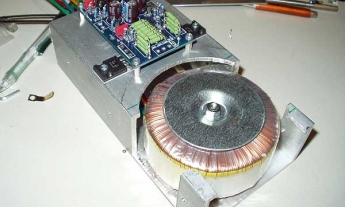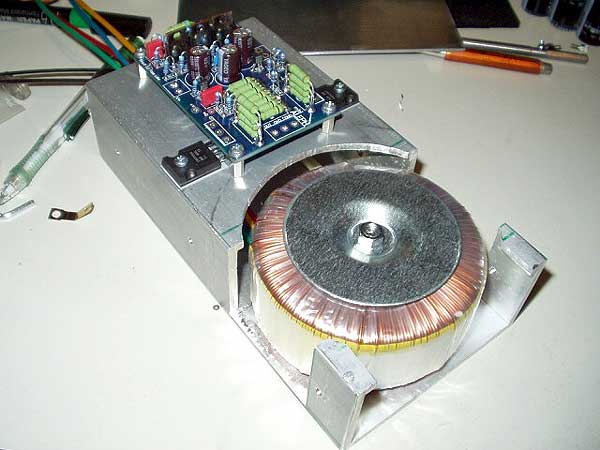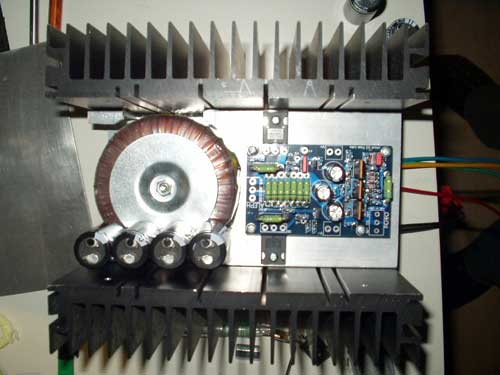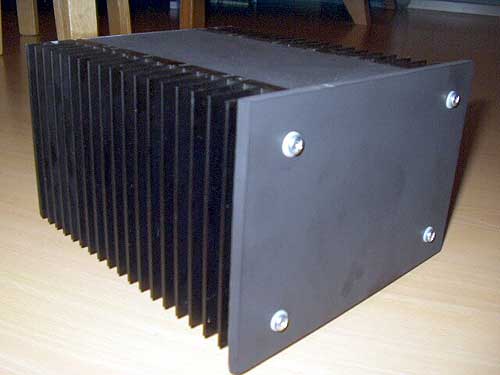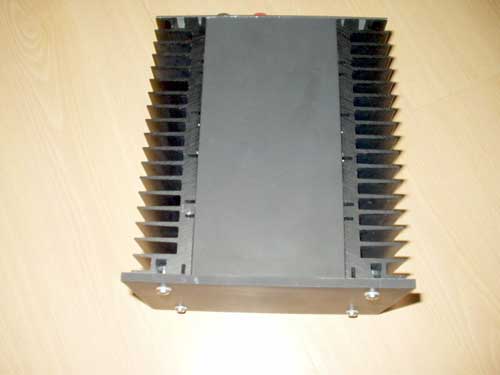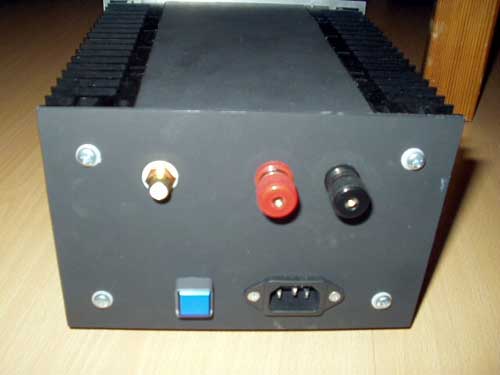Marcel van de Zande(amini-p5)
Miscellaneous Projects
After a week of hard work, my mini-A mono blocks are finished. After lurking around on the Pass labs section on the DIY forum for quite some time I decided to give it a try as well. The one thing that slowed me down was the amount of dissipated heat by the A3, 4 and 5. Therefore I was pleased with Brian's mini-A PC board.
I have tuned the supply voltage (25V) and the bias current (1,3A) to optimize for approx. 20W audio power per channel and a maximum dissipation of about 60W per mono-block.
The transformer (18 V) of each mono block is rated at 225 VA. Bridge rectifier are the ordinary high current (35 A) types. 16 Nippon caps of 6800/35V are used in a CRC-configuration. A 0.2 Ohm resistors used between two banks of 4 capacitors. The noise on the power rails is about 120mV and no hum is produced by the speakers.
I bought the PCB from BrianGT and only used the main PCB. The parts used are just high quality parts but no "fancy stuff" and basically used the parts laying around in my shop.
I changed the output fets to IRFP054 to give that extra bit of margin, given the dissipation of 30W per fet in my version. This type can handle a higher dissipation as well as operate at a higher junction temperature.
The heat sinks are 40 mm deep, 200 mm long and 120 mm high and rated at 0,5C/W. These sinks are mounted to an aluminium tube of 50x100mm (200mm long) on both sides. This tube also is acting as the bottom plate and shielding for the mains wires, power switch and power socket. On top of the tube, both the PCB and the power fets are mounted. The front and back panel are simply screwed to the heat sinks. The top cover is again made from the aluminium tube that was cut in half.
In order to keep the cost down, the heat sinks were used as an integral part of the case and it took quite some puzzling to fit all components into the case and still keep the size acceptable and the case design simple.
The sound is simply extremely nice to listen to! It is amazing what one can do with only 20W of audio power. It seems as if a way larger power amplifier is driving the speakers.
The only problem with these amplifiers is that i can not stop listening to them, and ever since I use these amps, I'm late at work and late for my appointments!
Thank you Nelson, for sharing so much to the DIY-community. Also a big thank-you to diyAudio.com for sharing their expertise.
Marcel van de Zande – the Netherlands







